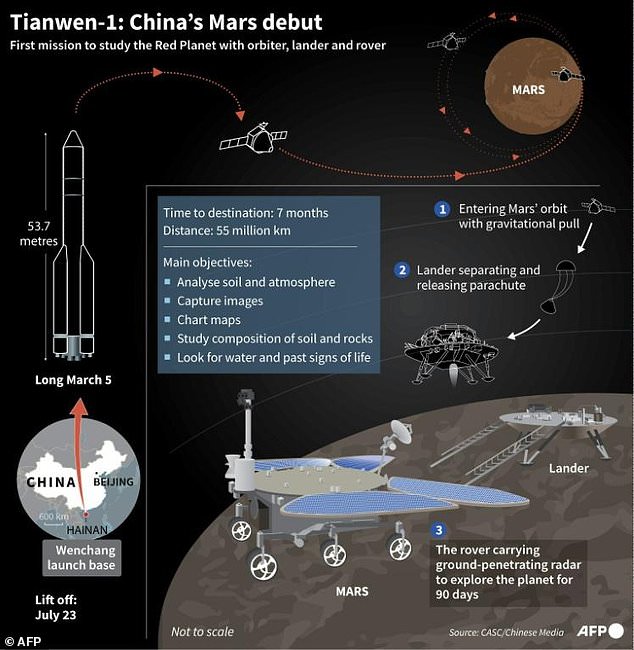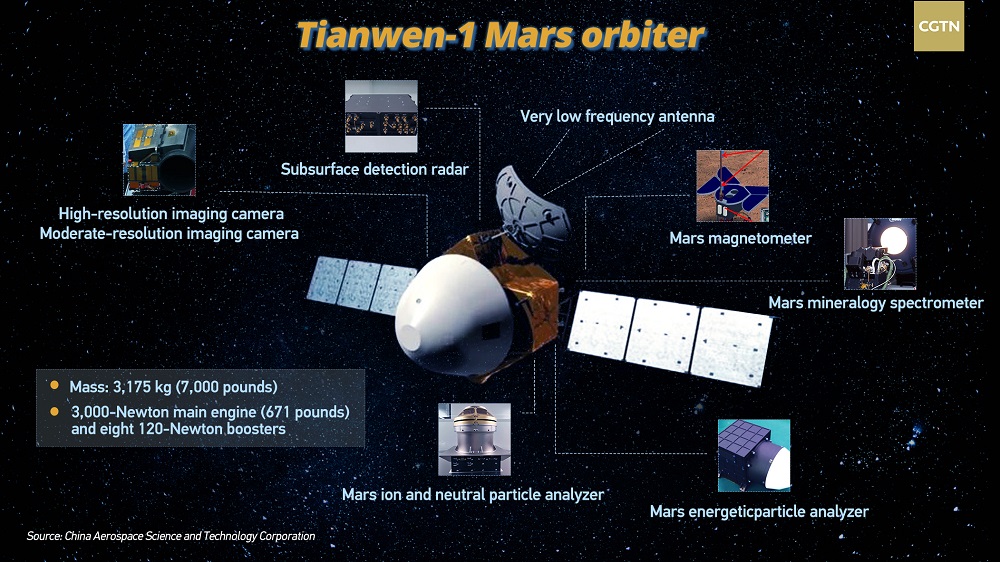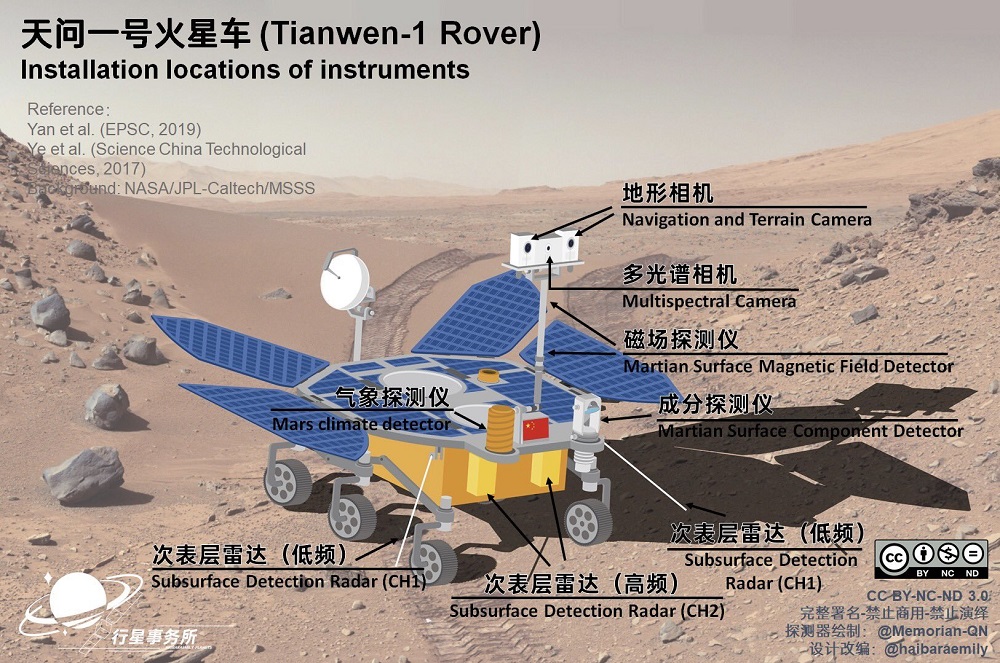China’s Tianwen 1 Mars Mission

China’s first independent Mars mission, Tianwen 1, reached the orbit around the Red Planet on February 10, 2021. China’s successful interplanetary mission comes a day after the United Arab Emirates’ Hope orbiter reached the Mars orbit and precedes the landing of NASA’s Perseverance rover by a week.
Tianwen 1, which means “quest for heavenly truth,” consists of an orbiter, a lander and a six-wheeled rover carrying scientific instruments, according to the China National Space Administration (CNSA).
Tianwen 1 has flown for 197 days and more than 465 million kilometers on its journey to the planet. It was launched by a Long March 5 heavy-lift carrier rocket in July 2020 from the Wenchang Space Launch Center in Hainan.
“Exploring the vast universe is the common dream of all mankind. We will cooperate sincerely and go hand in hand with countries all over the world to make mankind’s exploration of space go further,” Zhang Kejian, CNSA director said.
 (Image Credit: AFP)
(Image Credit: AFP)
China launched its first unmanned Chinese lunar-orbiting spacecraft Chang'e 1 in 2007 under the Chinese Lunar Exploration Program. However, this is the first step for China’s artificial satellite to achieve the goal of “orbiting, landing, and patrolling”.
In the future, Tianwen 1 will also undergo several orbital adjustments, enter the Mars mooring track, and launch exploration and filming mission in pre-selected landing area. It is scheduled to land on Mars on May 21, 2021. The lander and rover will carry out exploration mission after landing on Mars, while the orbiter will continue to orbit around Mars to perform different tasks including communication transmission and exploration.
China further plans to conduct more than 40 orbital launches in 2021, including human spaceflight missions and to build the country’s first space station.
At present, 47 Mars missions have been launched, including 22 from the U.S., 19 from the former Soviet Union and Russia, 2 from Europe, 1 from Japan, 1 from India, 1 from the UAE, and now 1 from China. However, most of the attempts to land on Mars have ended unsuccessfully, as NASA’s Associate Administrator for Communications Marc Etkind stated, “If there's one thing we know, it's that landing on Mars is never easy”. Therefore, Mars is widely known as the graveyard of rovers and landers.
 (Image Credit: CGTN)
(Image Credit: CGTN)
Objectives of Tianwen 1 Mission:
1. Draw a map of the shape and geological structure of Mars
2. Investigate the soil characteristics and water ice distribution on the surface of Mars
3. Analyze the material composition on the surface of Mars
4. Measure Mars’ surface climate and environmental characteristics of the ionosphere
5. Explore Mars’ internal structure and physical field including electromagnetic field and gravitational field.
The mission’s ultimate goal is to soft-land a rover in May on the southern part of Mars’ Utopia Planitia where a large deposit of water ice lies beneath the planet’s surface to conduct scientific surveys. If successful, China will become the second country, after the US, to land and operate a rover on the Martian surface.
 (Image Credit: XXSWS)
(Image Credit: XXSWS)
Instruments on Tianwen 1
Tianwen 1 probe has 13 effective instruments, including seven instruments on the orbiter and six instruments on the rover. The instruments on the orbiter include two cameras, Mars orbit subsurface detection radar, mineralogy spectrometer, magnetometer, ion and neutral particle analyzer, and high-energy particle analyzer. The rover instruments include a multi-spectral camera, a terrain camera, a Martian subsurface detection radar, a Martian surface composition detector, a Martian magnetic field detector, and a Martian weather monitor.
The probe’s medium-resolution cameras, high-resolution cameras, magnetometers, mineral spectrometers, ion and neutral particle and energetic particle detectors are all set to explore Mars.
















